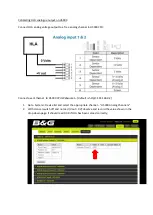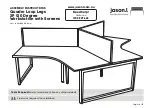
Chapter 5: Safety
49
Sa
fe
ty
Intended Uses
This product is a small, hand-carried, ultrasound machine used to obtain a “quick look” for
physicians at the point of care. The simplified user interface is designed for quick scans without
difficulty. The intended uses for each exam type are contained here. See the intended transducer for
exam type in
Table 1, “Exam Types and Imaging Modes” on page 22
Abdominal Imaging Applications:
This system transmits ultrasound energy into the abdomen of patients using 2D, CPD, and Tissue
Harmonic Imaging to obtain ultrasound images. The gross anatomical structures of the abdominal
cavity (e.g., liver, kidneys, pancreas, spleen, gallbladder, great abdominal vessels) can be assessed
for size and presence or absence of obvious pathology.
Cardiac Imaging Applications:
This system transmits ultrasound energy into the thorax of patients using 2D, DCPD, and Tissue
Harmonic Imaging, to obtain ultrasound images. The gross cardiac anatomy, pericardial space (area
surrounding the heart), pleural cavity, and overall cardiac performance can be assessed for the
presence or absence of obvious pathology.
Gynecology Imaging Applications:
This system transmits ultrasound energy into the pelvis and lower abdomen using 2D, CPD, and
Tissue Harmonic Imaging to obtain ultrasound images. The gross anatomical structures of the
pelvic cavity (e.g., uterus, ovaries) can be assessed for the presence or absence of obvious pathology.
Interventional and Intraoperative Imaging Applications:
This system transmits ultrasound energy into the various parts of the body using 2D, CPD, DCPD,
and Tissue Harmonic Imaging to obtain ultrasound images that provide guidance during
interventional and intraoperative procedures. This system can be used to provide ultrasound
guidance for biopsy and drainage procedures, vascular line placement, peripheral nerve blocks,
obstetrical procedures, and provide assistance during abdominal and vascular intraoperative
procedures.
Obstetrical Imaging Applications:
This system transmits ultrasound energy into the pelvis of pregnant women using 2D, CPD, and
Tissue Harmonic Imaging to obtain ultrasound images. The gross fetal anatomy, viability, amniotic
fluid, placental location, and surrounding gross anatomical structures can be assessed for the
presence or absence of obvious pathology. CPD imaging is intended for high-risk pregnant women.
High-risk pregnancy indications include, but are not limited to, multiple pregnancy, fetal hydrops,
placental abnormalities, as well as maternal hypertension, diabetes, and lupus.
Warning:
This system is not intended for use in providing guidance for central nerve blocks,
i.e., the brain and spinal cord, or for ophthalmic applications.
Caution:
CPD images can be used as an adjunctive method, not as a screening tool, for the
detection of structural anomalies of the fetal heart and as an adjunctive method, not
as a screening tool for the diagnosis of Intrauterine Growth Retardation (IUGR).
Summary of Contents for iLook
Page 1: ...iLook USER GUIDE...
Page 2: ......
Page 3: ...iLook USER GUIDE...
Page 8: ...vi...
Page 28: ...20 Chapter 2 Getting Started Getting Started...
Page 40: ...32 Chapter 3 The Exam Exam...
Page 64: ...56 Chapter 5 Safety Safety...
Page 88: ...80 Chapter 8 References References...
Page 94: ...86 Chapter 9 Glossary Glossary...
Page 100: ...92 Index Index...
Page 101: ......
Page 102: ...P02651 04...
















































